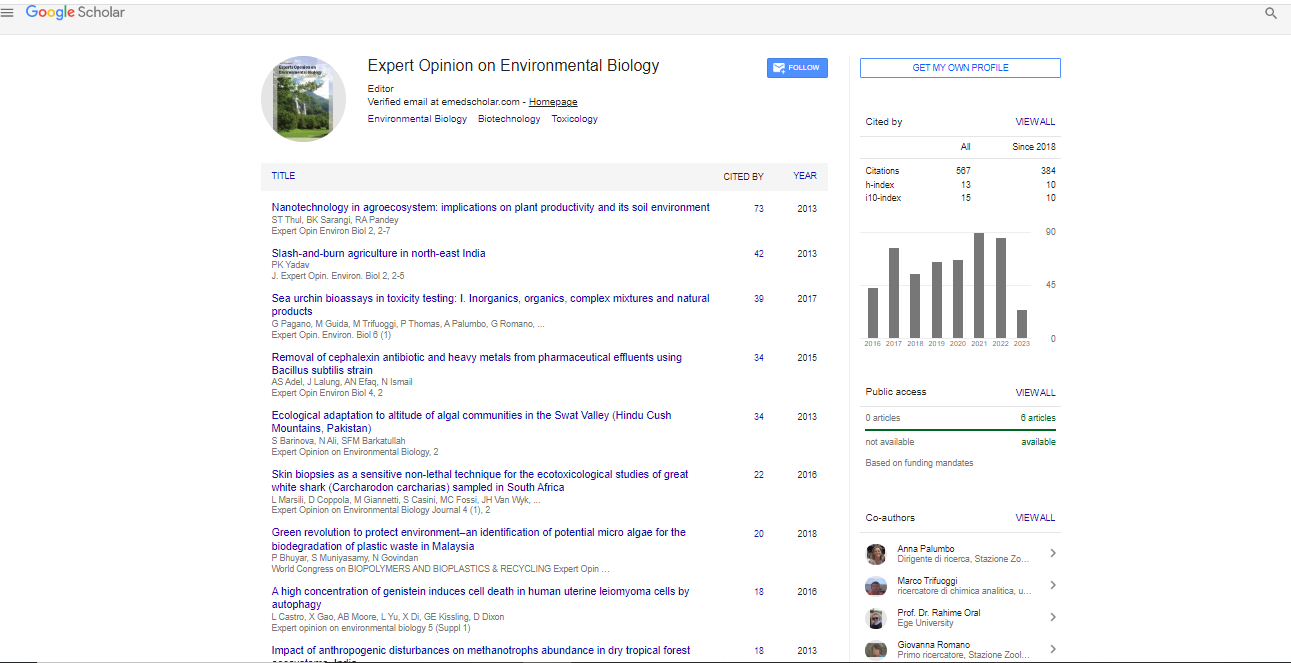Characterization of seasons from wind profiles observed by VHF radar in West Africa
Houngninou B Etienne, Kougbeagbede Hilaire, Moumouni Sounmaila, Guedje K Francois, Alle C S Ulrich1, Adechinan A Joseph and Houngninou T Erik
Universite d Abomey-Calavi, Benin
Universite de Parakou, Benin
: Expert Opin Environ Biol
Abstract
The variability of the West African monsoon had socio- economic and environmental impacts on populations. This variability is closely linked to atmospheric circulation, which also plays a dominant role in the organization of the monsoon. These experimental results provide information on the dynamics of winds through the features of the jets. Data are provided by VHF wind profiler radar installed in Benin, precisely Nangatchori (9°6472N, 1°7411E) during the measurement campaign AMMA program (2006-2007). This study shows the presence of the African Easterly Jet (AEJ) in the middle troposphere (2-4 km). It shows also the presence of the Subtropical Jet West (STJ) and the Tropical Easterly Jet (TEJ) in the upper troposphere (10 km). The patterns obtained let distinguish two great seasons characterizing the Hydro meteorological Observatory of Ouémé Upper Valley. The Hierarchical Agglomerative Clustering (HAC) applied to the wind mean velocity and frequency of direction at 10 km associated to the monthly rain confirms the two great season’s existence: one dry season (November to March) and wet season (April to October). The wet season is characterized by three phases: the pre-wet phase (April, May and June), the heart of the wet season (July, August, September) and the post-wet phase (October).
Biography
Email: hilars83@gmail.com
 Spanish
Spanish  Chinese
Chinese  Russian
Russian  German
German  French
French  Japanese
Japanese  Portuguese
Portuguese  Hindi
Hindi 
